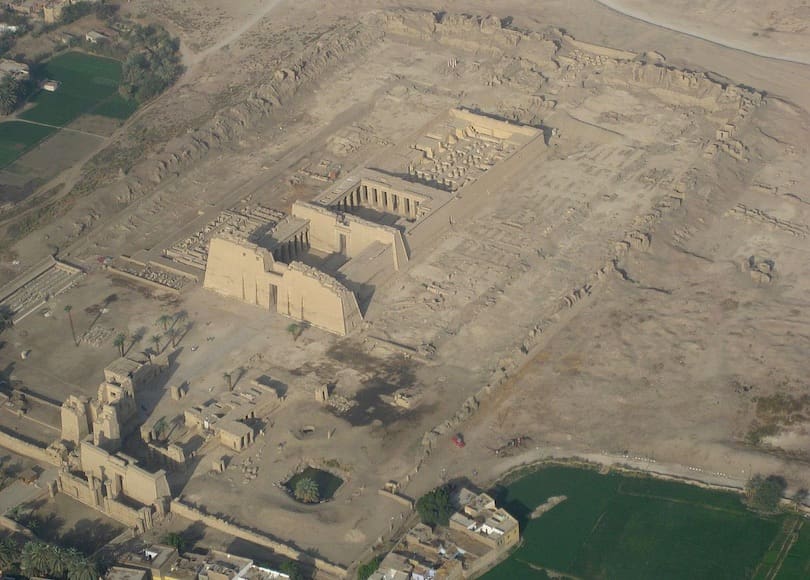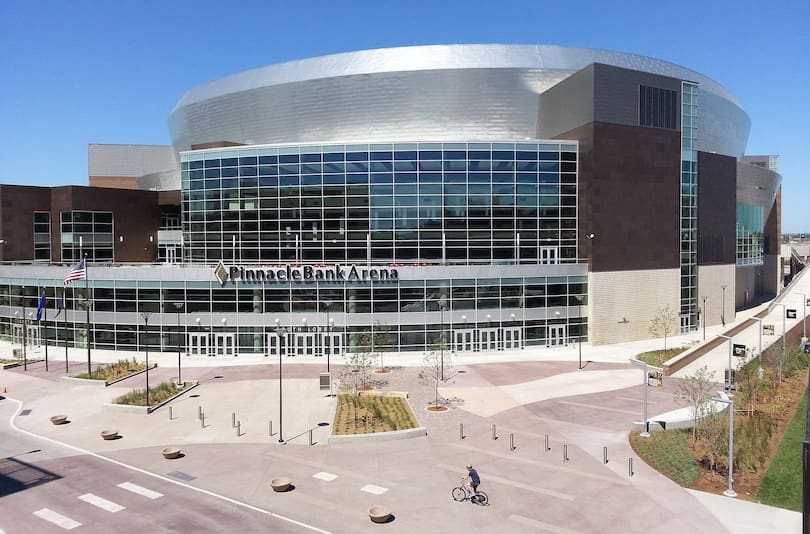Delve into the wonders of the 10 Most Impressive Ancient Egyptian Temples, marvels of architecture that have stood the test of time. Discover the history, significance, and grandeur of these awe-inspiring structures.
Introduction: Journey Through Time and Majesty
Welcome to a captivating journey back in time as we explore the 10 Most Impressive Ancient Egyptian Temples. These remarkable structures stand as a testament to the ingenuity, skill, and spirituality of the ancient civilization that once thrived along the banks of the Nile River.
Egyptian temples were not merely places of worship; they were sacred precincts where rituals, ceremonies, and cultural events unfolded. Each temple held immense historical and religious significance, attracting devotees and travelers alike to witness their grandeur.
Join us as we embark on this expedition to uncover the stories behind these architectural wonders, embracing their cultural legacy and marveling at their breathtaking beauty.
The Temple of Karnak: A Colossal Divine Complex
The Temple of Karnak, nestled within the city of Luxor, is a colossal complex that served as the heart of religious devotion in ancient Egypt. Dedicated to the revered Theban triad of Amun, Mut, and Khonsu, this temple mesmerizes visitors with its towering pillars and captivating hieroglyphics.
The Great Sphinx of Giza: Guardian of the Pyramids
Gazing majestically over the Giza Plateau, the Great Sphinx of Giza stands as a symbol of ancient Egyptian mystery and might. With the body of a lion and the head of a pharaoh, this enigmatic statue has guarded the Pyramids of Giza for millennia, captivating the minds of scholars and adventurers alike.
Abu Simbel Temples: Masterpieces of Monolithic Architecture
The twin temples of Abu Simbel, hewn from solid rock, are a testament to Ramses II’s greatness. Carved into the mountainside, these awe-inspiring structures astound visitors with their immense statues and detailed carvings, showcasing the pharaoh’s military victories and divine connections.
The Temple of Luxor: Where Gods and Royalty Converged
Situated on the east bank of the Nile, the Temple of Luxor is a site where the ancient Egyptian pharaohs were crowned and celebrated their divine connections. This magnificent temple complex boasts breathtaking statues, colossal obelisks, and intricate murals, weaving a tapestry of ancient stories.
The Valley of the Kings: Where Pharaohs Rest Eternally
In the heart of the Theban Necropolis, the Valley of the Kings houses the tombs of numerous pharaohs, including Tutankhamun and Ramses II. These elaborate burial sites, adorned with intricate paintings and hieroglyphs, offer a glimpse into the beliefs and rituals of ancient Egyptian funerary practices.
The Temple of Hatshepsut: A Testament to Female Pharaonic Power
The mortuary temple of Hatshepsut, one of Egypt’s few female pharaohs, stands as a remarkable architectural marvel. Carved into the cliffs of Deir el-Bahri, this temple harmoniously blends with the natural landscape, celebrating the achievements and reign of this powerful ruler.
Kom Ombo Temple: A Unique Dual Sanctuary
Dedicated to two gods, Sobek and Horus the Elder, the Kom Ombo Temple is an extraordinary double sanctuary in Upper Egypt. With symmetrical halls and shrines, this temple exemplifies ancient Egyptian beliefs and their reverence for deities.
Philae Temple: The Island of Isis
Located on the picturesque island of Philae, this temple was dedicated to the goddess Isis. Rescued from the rising waters of the Nile after the construction of the Aswan High Dam, Philae Temple now stands as a symbol of international cooperation in preserving Egypt’s cultural heritage.
Edfu Temple: A Well-Preserved Ptolemaic Wonder
The Edfu Temple, dedicated to the falcon-headed god Horus, is one of the best-preserved ancient Egyptian temples. This temple complex’s remarkably intact state allows visitors to immerse themselves in the religious practices and architectural splendor of ancient times.
The Temple of Medinet Habu: Ramses III’s Mortuary Temple
The Temple of Medinet Habu, built by Ramses III, is a stunning mortuary temple adorned with intricate carvings and vivid colors. This grandiose structure served as a symbol of the pharaoh’s might and an everlasting tribute to his memory.
FAQs
Q: What is the significance of Egyptian temples?
Ancient Egyptian temples were not just places of worship; they served as centers of religious and cultural activities. The temples honored deities, celebrated pharaohs’ accomplishments, and facilitated rituals to ensure cosmic order and divine blessings.
Q: How were the temples constructed?
The construction of Egyptian temples involved meticulous planning, skilled craftsmanship, and communal efforts. The temples were built using massive stone blocks, and their walls were adorned with intricate hieroglyphics and paintings.
Q: Which temple is the largest in Egypt?
The Temple of Karnak is the largest temple complex in Egypt. Its vast size, multiple chapels, and colossal hypostyle hall make it an awe-inspiring architectural marvel.
Q: Were all temples open to the public?
While some areas of the temples were accessible to the public, certain inner sanctums were restricted to high priests and pharaohs, where sacred rituals were performed.
Q: How were temples aligned with astronomical events?
Ancient Egyptian temples were often aligned with astronomical events, such as solstices and equinoxes, to mark significant dates in the religious calendar and ensure celestial harmony.
Q: Why did the ancient Egyptians build temples near the Nile River?
The Nile River was the lifeline of ancient Egypt, providing fertile land and sustaining communities. Temples were built close to the river as a symbol of divine blessings and to facilitate religious processions and ceremonies on the water.
Conclusion: The Timeless Legacy of Ancient Egypt
The 10 Most Impressive Ancient Egyptian Temples stand as timeless marvels, weaving tales of a civilization that revered its gods and celebrated its rulers through awe-inspiring architecture. From the colossal Temple of Karnak to the enigmatic Sphinx of Giza, each temple carries a piece of history and a glimpse into the profound beliefs of an ancient culture.
As we explore these ancient wonders, we are reminded of the importance of preserving and cherishing our cultural heritage. The legacy of ancient Egypt continues to captivate the world, leaving us in awe of the ingenuity and spiritual devotion of a civilization that thrived thousands of years ago.
So, take a moment to immerse yourself in the grandeur of the 10 Most Impressive Ancient Egyptian Temples and witness the beauty that has endured through the ages.
















Very soon this website will be famous among all blogging and site-building visitors,
due to it’s nice articles or reviews
What’s up it’s me, I am also visiting this website on a
regular basis, this web page is truly nice and the people are actually sharing pleasant thoughts.
An outstanding share! I’ve just forwarded this onto a coworker who was
conducting a little research on this. And he actually ordered me breakfast because I discovered it
for him… lol. So allow me to reword this….
Thanks for the meal!! But yeah, thanx for spending some time to discuss this matter here on your web page.
Also visit my web site – เว ป หวย ruay
Wonderful beat ! I wish to apprentice while you amend your website, how could i subscribe
for a weblog website? The account aided me a acceptable deal.
I had been tiny bit acquainted of this your broadcast offered brilliant clear concept
I every time spent my half an hour to read this
weblog’s content daily along with a cup of coffee.
Thank you a bunch for sharing this with all folks you actually
know what you are talking approximately! Bookmarked. Kindly additionally consult with my web site =).
We will have a hyperlink change contract among us
Well I definitely liked studying it. This post procured by you is very effective for proper planning.
you will have an awesome blog right here! would you wish to make some invite posts on my blog?
Este site é realmente fabuloso. Sempre que consigo acessar eu encontro coisas incríveis Você também pode acessar o nosso site e descobrir mais detalhes! informaçõesexclusivas. Venha descobrir mais agora! :)
Right here is the perfect webpage for anyone who would like to understand this topic.
You know so much its almost tough to argue with you (not that I actually would
want to…HaHa). You certainly put a fresh spin on a subject that
has been written about for years. Great stuff, just great!
누군가가 포스트을 쓸 때, 그는 사용자가 그것을 인식할 수 있도록 생각를 마음에 유지합니다.
그래서 이 기사이 놀랍습니다. 감사합니다!
Hi! I’m at work surfing around your blog from my new
apple iphone! Just wanted to say I love reading through your
blog and look forward to all your posts!
Carry on the outstanding work!
me encantei com este site. Pra saber mais detalhes acesse o site e descubra mais. Todas as informações contidas são informações relevantes e únicos. Tudo que você precisa saber está está lá.
Keep functioning ,terrific job!
Very nice post. I just stumbled upon your weblog and wished to
say that I have really enjoyed browsing your blog posts.
In any case I’ll be subscribing to your feed and
I hope you write again soon!
This post is in fact a pleasant one it assists new the web viewers, who
are wishing in favor of blogging.
buy generic amoxil for sale – https://combamoxi.com/ amoxil tablets